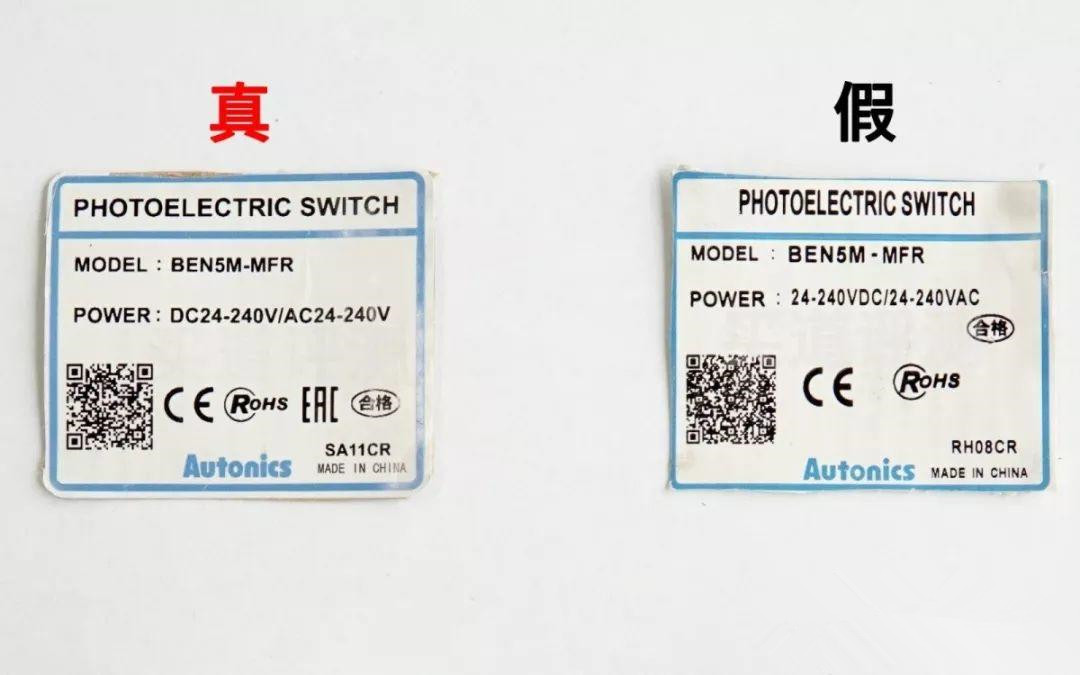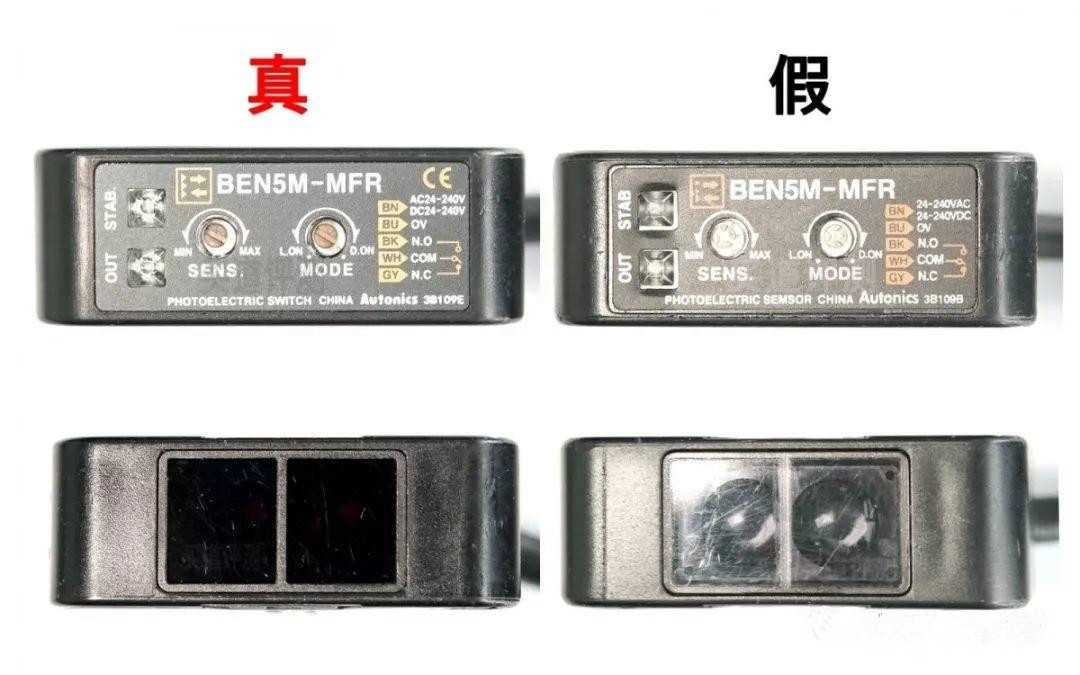How is the Autonics sensor high imitation? How difficult is it to identify true and false? Disassemble the sensor evaluation!
Photoelectric sensor for comparison of true and false sensors
It is BEN5M-MFR from Autonics.
Why did you choose this sensor for evaluation?
1, because of the wide voltage range, a wide range of applications
2, the detection distance is as far as 5m
3, belonging to the economical photoelectric sensor cost-effective
4, the brand of this model photoelectric sensor online sales

The picture above is the product label for this product.
In order to avoid interference from the box
We will uncover the label separately and take a photo comparison
Can see replicas than genuine
There is almost no difference except for the absence of an EAC logo.
"EAC certification is also the certification of the Customs Union, which is CU-TR certification. It applies to the countries of Russia, Belarus, Kazakhstan, Kyrgyzstan and Armenia (the Eurasian Economic Union of these five countries), as long as it is at the Customs If the products within the scope of the alliance's technical regulations are exported to the above five countries, they need to be certified by the Customs Union and obtain the EAC certificate, so that the products can be sold in these five countries, and the EAC logo can be pasted on the products."
If you have to find out the difference
The first line of English has a slight difference in typesetting and fonts.
It is difficult to judge if there is no genuine comparison.
Unless you are very familiar with the fonts used by Autonics LOGO
It’s hard to tell if it’s only from the appearance
The font of this point is slightly different

The picture above shows the side of the sensor (when the outlet is on the right)
Same 3C certification mark
The difference between imitation and authenticity is only a slight difference in font

The top part of the above image is the top of the sensor
Includes status lights, adjustment knobs, etc.
Please pay attention to the CE mark in the upper right corner of the product.
Genuine have imitation no
The color of the authentic and replica logo
Authentic shallow imitation deep
Genuine and replica adjustment potentiometer knob
Authentic color deep word opening imitation light cross opening
The lower part is the illuminating and receiving sensing window
Please pay attention to the lens material of genuine and replica
Genuine use of colored lenses with wavelength filtering
The replica uses a transparent material of colorless lens
The difference is the difference in resistance to light interference.
Lens with wavelength filtering
Anti-interference will be significantly higher than colorless transparent lenses
This is also the biggest difference that can be seen from the current appearance.
Here is how we disassemble the two sensors
See what is the difference inside
Let’s first take a look at the enlarged view of the key parts.

As a light sensor part of the optical path is definitely the focus
The genuine launch receiving part is made up of four support columns
The support column is also connected to a small flat board
The most basic guarantees the stable installation of the transmitting and receiving hardware
Basically guarantees the parallel stability of the optical path transmitting and receiving components
The replica launch and receive diodes are freely supported by the pins.
There is no fixed device, which is a bit random.
Disassemble the transmit receive window
No wonder the installation requirements of genuine components are very high.
Imitation goods can be installed at will
It turned out to be because
Genuine launch and receiving aperture diameter of about 1mm
The emission and receiving aperture of the replica is about 4mm in diameter
We can understand
The smaller the spot diameter, the higher the accuracy of the optical path.
The smaller the diameter of the measured object can be
The lower the probability of being disturbed
Let’s look at the overall internal layout.
Is it not the same as the appearance is almost indistinguishable?
Internal differences are still very large
Component selection, board layout, and processing of the optical path
A few points worth noting here
1, component selection:
Genuine components are obviously much better quality
The components of the replica have been reduced a lot.
2. Relay:
The relay used in the original is the domestic Hongfa brand
The imitation is OMRON relay
But about our understanding of Omron products
The authenticity of this relay...
3, the use of safety capacitors: the yellow part of the lower left corner of the genuine
Safety capacitors are generally anti-interference
There is no such copy in this part.
4, the welding of components:
Authentic components, each soldering is horizontal and vertical
The upright component of the replica is welded
SMD components are also twisted and twisted
I am very curious why it can be welded like this
The above is the true and false evaluation of this photoelectric switch sensor.
all content
in conclusion
As a sales volume in the market of Autonics
A model with high cost performance and versatility
The appearance of the imitation is super-hearted.
Almost difficult to distinguish from genuine
But when we opened it, we found it
The internal work gap is huge
Every detail can affect electrical performance and service life
It is difficult to buy a sensor and go back to cut it when we usually purchase it.
First of all, this can't be costed, and time can't be drawn.
Therefore, it is recommended that you still find a regular supplier, do not covet small cheap
This is an effective way to prevent false sensors in advance.



